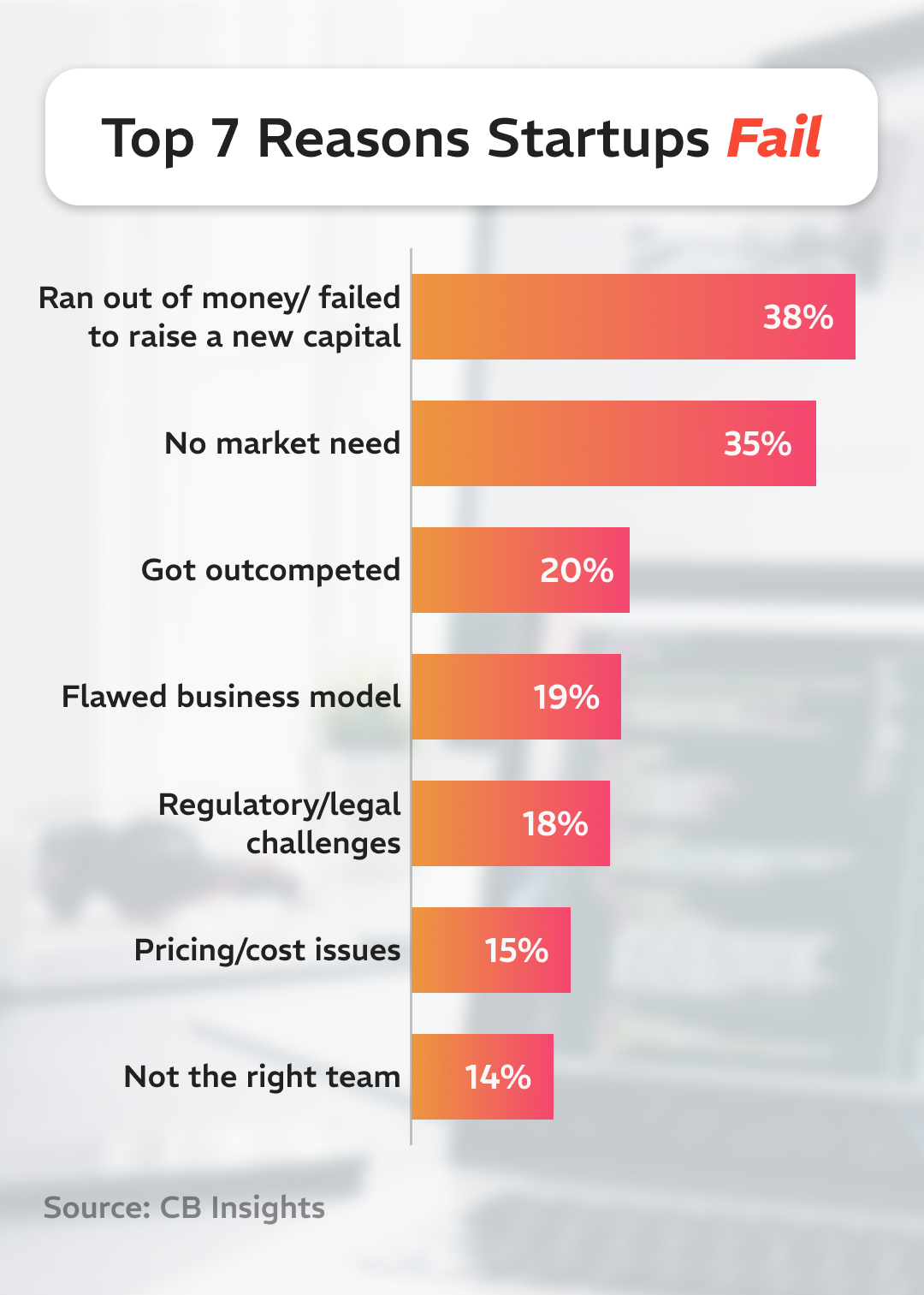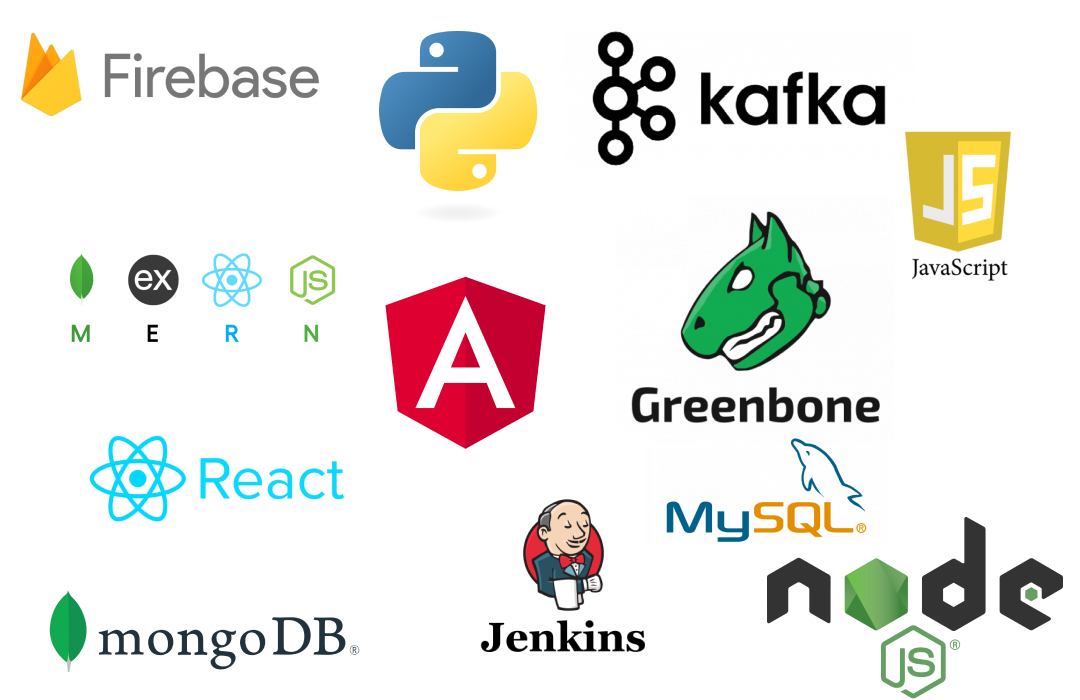- Published on
10 Things to Know Before Building Your First Tech Product
- Authors

- Name
- ByteGeometry
- @ByteGeometry
Building your first tech product is an exciting step — but it is also a risky one. Whether you’re launching a startup or automating your business operations, many first-time founders start without a solid plan or forget about pitfalls that they might face.
According to CB Insights, 35% of startups fail because there’s no market need, and 17% fail due to product mismanagement — both of which could be avoided with better planning from day one.

At ByteGeometry, we’ve helped over 50 companies launch their products, rebuild legacy systems, and bring bold ideas to market. Whether you’re a non-technical founder, a first-time startup CEO or CTO, or a small business looking to launch internal tools or a SaaS product, you’ll learn how to plan smarter, avoid costly mistakes, and move faster — with fewer surprises.
1. Not Every Idea Needs an App
One of the biggest mistakes first-time founders make is rushing into development before truly understanding what their audience wants or needs. The truth is, you can test and validate most ideas without writing a single line of code.
Before investing in design or development, validate your idea first:
- Create a landing page (tools like Carrd or Webflow work great) to prove there's a demand for your product
- Run a waitlist campaign with email signup
- Or use no-code tools like Bubble or Glide to test a prototype
This way, you can find out whether there’s real interest in your product — without spending thousands on building something that might not have a future.
2. The MVP Is Your Best Friend
When you're just starting out, you don’t need to build the full product. What you really need is a way to prove that your idea delivers value — and that people are willing to use (or pay for) it.
That’s where the Minimum Viable Product (MVP) comes in. An MVP is a simple version of your product that focuses only on the core feature — the one thing that solves a real pain point for your users.
A strong MVP should:
- Solve one specific problem your target users face
- Take no more than 2–3 months to build
- Be simple enough to iterate quickly based on real feedback
Building an MVP helps you reduce risk, get to market faster, and save time and money. It’s not about cutting corners — it’s about learning what actually works before going all-in.

3. Design Before You Develop
Skipping the design phase is one of the easiest ways to waste time and money in development.
Founders often rush straight into coding without first mapping out how users will interact with their product. But thoughtful design isn’t just about how your app looks — it’s about how it works.
A solid UX/UI process helps you:
- Align the entire team on user flows before a single line of code is written
- Save 20–30% of future bug fixing and rework
- Build clickable prototypes that can be used for internal testing, investor pitches, or early sales demos
Tools like Figma, Maze, and InVision make it easy to create and test designs, even if you’re not a designer. You can visualize every screen, test interactions, and gather feedback before committing to development.
4. Choose the Right Tech Stack

The technology you choose today can shape the future of your product — for better or worse.
Many early-stage startups make the mistake of letting developers choose the stack based solely on personal preference or familiarity. While that might seem fine short-term, it can cause major issues down the road.
The tech stack — the combination of programming languages, frameworks, and tools your product is built on — directly affects:
- Your ability to hire: Will you be able to find developers who know this stack in 6–12 months?
- Scalability: Can this tech handle more users or features as you grow?
- Third-party integrations: Does it work well with APIs, CRMs, or other tools you plan to use?
Some common and startup-friendly stacks include:
- Python + Django — Excellent for fast backend development with built-in admin tools
- MERN (MongoDB, Express, React, Node.js) — Great for full-stack JavaScript apps
- Next.js + Firebase — Good for serverless, scalable apps with fast frontend
5. You Need a Product Owner
One of the most overlooked roles in early-stage tech projects is the Product Owner. Many founders assume the development team will naturally stay aligned with the business goals, but without a clear decision-maker, projects can quickly spiral out of control.
The Product Owner is responsible for keeping everyone on the same page — translating business needs into actionable priorities, managing the roadmap, and ensuring the team is focused on solving the right problems.
This person doesn’t need to be a technical expert but must deeply understand the product’s goals, user needs, and business value.
Without this role, teams often build features no one asked for, waste time on low-priority tasks, or deliver something that doesn’t actually solve the user’s problem. A dedicated Product Owner keeps your project on track, on budget, and aligned with your goals.
6. Utilize Agile
Agile development is a structured process, not an excuse to skip planning. It’s about creating a flexible framework that allows for continuous learning, improvement, and quick adjustments. The essence of agile lies in iterating quickly, getting feedback, and making necessary changes without losing sight of the product’s goals.
At its best, agile allows:
- Fast feedback loops: Agile encourages frequent interactions with users and stakeholders, ensuring that the product evolves in alignment with real-world needs and expectations.
- Flexibility to pivot: Agile teams can adapt quickly based on feedback or market changes, ensuring that the product can stay relevant and competitive.
- Constant value delivery: Instead of waiting months to launch, agile allows teams to release incremental updates that provide value to users regularly.
But if you’re not setting milestones, retrospectives, or sprint goals — you’re not being agile, just disorganized.
7. Your First Developer ≠ Your CTO
It’s tempting to think that hiring a skilled developer means you’re set for the entire product development journey. However, a good developer is not automatically a product strategist or a business leader. When you hire your first developer, they’ll likely focus on building features, but they won’t necessarily help you steer your product toward long-term goals.
Instead, start with a tech lead or team that knows how to build MVPs efficiently. When you have traction and funding, hire full-time leadership.
8. Timelines Always Shift
Even the best development teams face delays. Whether it’s tech debt, bugs, or unclear product specifications, delays are a natural part of the development process. As a non-technical founder, it’s important to account for these uncertainties in your planning.
To avoid being caught off guard, it’s wise to build buffer time into your roadmap. For instance, if your team estimates that a feature will take 8 weeks to build, plan for 10 weeks instead. This gives you room to handle setbacks without derailing your project.
9. Dev Cost ≠ Total Cost
When budgeting for your product, it’s easy to focus only on development costs — but that’s just one piece of the puzzle. Development typically makes up only 40-60% of the total cost of bringing a product to market. The rest of your budget will go toward essential activities that keep the product running smoothly post-launch.
Here are some hidden costs to consider:
- QA and testing
- DevOps and hosting
- Support and maintenance
- Marketing and customer onboarding
Make sure to plan your budget beyond just the development phase, and factor in the full lifecycle of your product, from launch to growth.
10. You Don’t Have to Build Alone
Trying to manage freelancers, PMs, and QA as a non-technical founder can be overwhelming.
Instead:
- Partner with a vetted software agency that understands startup rhythm
- Get fractional CTO consulting (many offer this)
- Join founder communities
A good partner will save you months of pain and tens of thousands in rework.
Conclusion
Your first tech product won’t be perfect — and that’s okay. What matters is how fast you learn, validate, and improve. Start lean, be consistent and surround yourself with a team that’s aligned with your vision.
Want help planning your first MVP or getting unstuck?
Book a free 45-minute consultation with our team and get a personalized action plan.